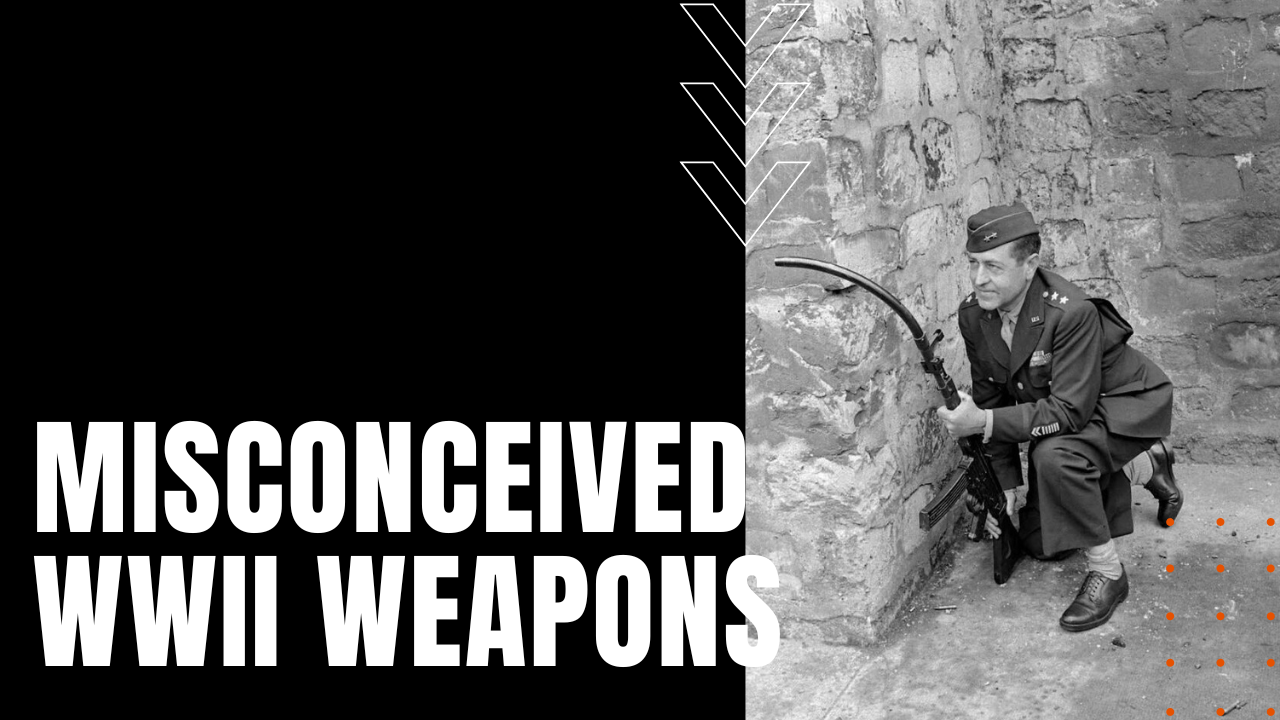Misconceived Weapons of World War Two

Designed to penetrate concrete bunkers and beach defenses along Hitler’s Atlantic Wall, the ten-foot-tall Panjandrum consisted of two rocket-propelled wheels joined by an axel filled with high explosives. Built by Britain’s Directorate of Miscellaneous Weapons Development and named after a bit of 18th century nonsensical prose, tests in 1943 and 44 exposed a myriad of dangerous problems, including wheel and rocket detachments and runaway target paths, causing Allied war leaders to refocus their D-Day invasion plans on sheer troop strength alone.
Hitler’s Super Cannon
Hitler’s V3 super cannon was another failed weapon, designed to bombard London from an underground bunker, some 100 miles away along the coast of northern France. Employing a battery of 25 gun tubes sunk into a fortified bunker, each tube of the V3 used a sequence of secondary firing charges to accelerate a shell up to the necessary velocity required for its 100-mile flight, with an intended payload output of some 600 shells an hour.
Knocked Out by the Allies
Thanks to a relentless Allied bombing campaign, the V3 was knocked out of service on July 6th, 1944, before a single shell could be fired at the British capitol. Another misconceived weapon was Germany’s Krummlauf curved barrel rifle, designed to fire around corners or the top hatch of a tank, with the goal of safely eliminating enemy combatants without exposure to retaliatory gunfire. Once in use, soldiers soon discovered that the barrel quickly distorted or shattered due to a bullet’s inherent velocity, leaving both bullets and bodies shattered by explosive force.
A Geographic Fail
Last but not least was the Maginot Line, which was constructed by the French in response to Germany’s defiant rearmament after the Treaty of Versailles forbade them to do so. Built between 1929 and 1939, the Maginot Line consisted of a network of fortresses, bunkers, obstacles and artillery batteries along the connected borders of France, Germany, Luxembourg and Switzerland—a place where French military planners hoped to concentrate their limited number of troops against an anticipated German invasion through Belgium. After the Nazi’s lived up to French expectations in May of 1940, the Germans bypassed the Maginot Line for an advance through France’s undefended Ardennes forest, making ill-conceived weapons of World War Two, some of the worst blunders in military history.
